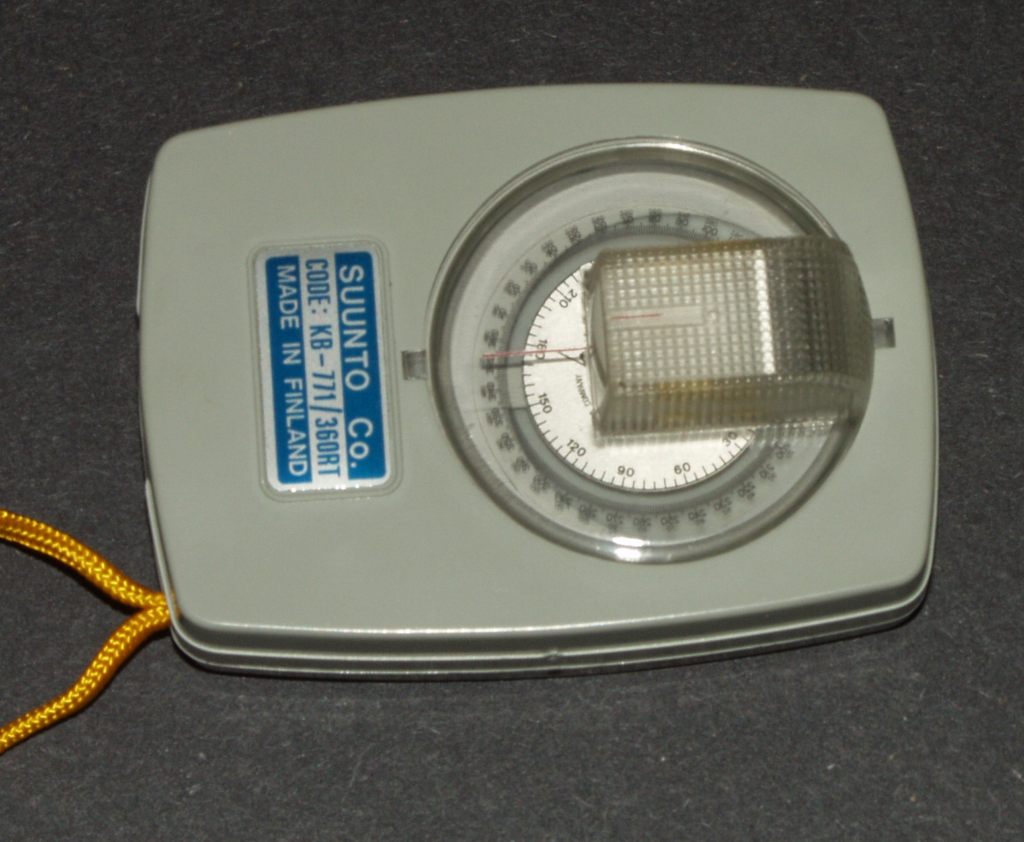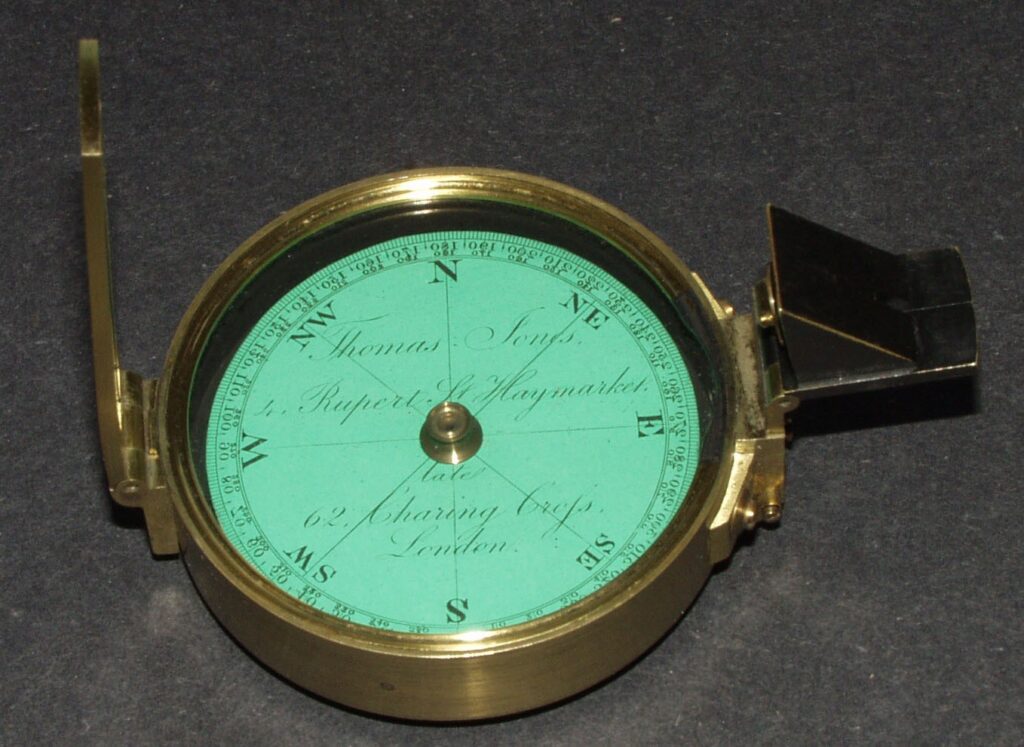A prismatic compass uses a prism to allow the compass card to be read, the design has it’s origins in Schmaulcalders Patent of 1812. The prism is normally mounted in a protective case for reading the scale when taking a bearing. This is easily spotted by the presence of a triangular hinged case at the rear of the compass. A good example of these compasses are the military compasses commonly available in the UK.

It is possible for the prism to be located in the compass body itself and this type of design makes for an easy to use hand bearing compass, such as those by Suunto.

Prismatic compasses based on Schmaulcalders original patent are generally larger and lack liquid damping. This example was made by Thomas Jones, who manufactured compasses for Schmaulcalder.

One of the characteristics of a prismatic compass is that the compass rose numerals are reversed so they can be read correctly through the prism. In general the prismatic compasses are heavier.

